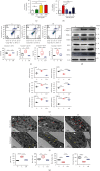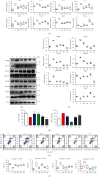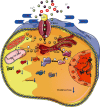Inhibition of TRPA1 Ameliorates Periodontitis by Reducing Periodontal Ligament Cell Oxidative Stress and Apoptosis via PERK/eIF2 α/ATF-4/CHOP Signal Pathway
- PMID: 35720191
- PMCID: PMC9205716
- DOI: 10.1155/2022/4107915
Inhibition of TRPA1 Ameliorates Periodontitis by Reducing Periodontal Ligament Cell Oxidative Stress and Apoptosis via PERK/eIF2 α/ATF-4/CHOP Signal Pathway
Abstract
Objective: In periodontitis, excessive oxidative stress combined with subsequent apoptosis and cell death further exacerbated periodontium destruction. TRPA1, an important transient receptor potential (TRP) cation channel, may participate in the process. This study is aimed at exploring the role and the novel therapeutic function of TRPA1 in periodontitis.
Methods: Periodontal ligament cells or tissues derived from healthy and periodontitis (PDLCs/Ts and P-PDLCs/Ts) were used to analyze the oxidative and apoptotic levels and TRPA1 expression. TRPA1 inhibitor (HC030031) was administrated in inflammation induced by P. gingivalis lipopolysaccharide (P.g.LPS) to investigate the oxidative and apoptotic levels of PDLCs. The morphology of the endoplasmic reticulum (ER) and mitochondria was identified by transmission electron microscope, and the PERK/eIF2α/ATF-4/CHOP signal pathways were detected. Finally, HC030031 was administered to periodontitis mice to evaluate its effect on apoptotic and oxidative levels in the periodontium and the relieving of periodontitis.
Results: The oxidative, apoptotic levels and TRPA1 expression were higher in P-PDLC/Ts from periodontitis patients and in P.g.LPS-induced inflammatory PDLCs. TRPA1 inhibitor significantly decreased the intracellular calcium, oxidative stress, and apoptosis of inflammatory PDLCs and decreased ER stress by downregulating PERK/eIF2α/ATF-4/CHOP pathways. Meanwhile, the overall calcium ion decrease induced by EGTA also exerted similar antiapoptosis and antioxidative stress functions. In vivo, HC030031 significantly reduced oxidative stress and apoptosis in the gingiva and periodontal ligament, and less periodontium destruction was observed.
Conclusion: TRPA1 was highly related to periodontitis, and TRPA1 inhibitor significantly reduced oxidative and apoptotic levels in inflammatory PDLCs via inhibiting ER stress by downregulating PERK/eIF2α/ATF-4/CHOP pathways. It also reduced the oxidative stress and apoptosis in periodontitis mice thus ameliorating the development of periodontitis.
Copyright © 2022 Qian Liu et al.
Conflict of interest statement
The authors declare no relevant financial or nonfinancial interests to disclose.
Figures







References
MeSH terms
Substances
LinkOut - more resources
Full Text Sources
Research Materials

